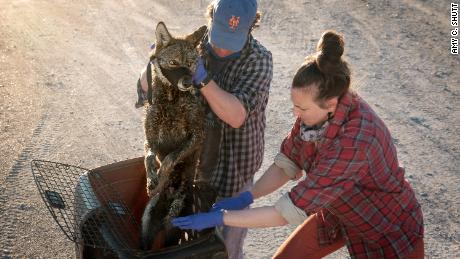Princeton University biologist Bridget von Holt heard from observers in Texas and Louisiana that he noticed that the coyotes in their area were "different." .. A genetic study by von Holdt and her team on June 29 found that many of these coyotes have important red wolf ancestry as a result of mating red wolves with coyotes.
"Despite the extinction or alleged red wolf, those genes are likely to have survived in these coyotes that have their heritage," von Holt said. Explained to CNN. These "ghost genes" can play an important role in maintaining red wolf populations.
This study focuses on the coyote population in southwestern Louisiana. This coyote is near the place where the last surviving red wolf in the 1970s was identified and placed in captivity. The
team took samples from about 30 coyotes in Louisiana and analyzed their genetics for their similarity to red wolves. "The range of red wolf ancestry is somewhere between 30 and 70%," said von Holdt.
This finding raises serious questions about conservation policy. Far from being endangered, coyotes are abundant in many parts of North America, and hunting in the United States is legal. However, red wolves are protected by the US Fish and Wildlife Service. Decades of mating have made it difficult to make a clear distinction between the two species, as von Holdt's genetic analysis of coyotes in southwestern Louisiana shows.
"Most people will probably ask: if something has 70% red wolf genetics, is it a red wolf?" Von Holdt said. "I have no answer to them. It's a federal designation."


Joey Dr. Hinton and Dr. Christine Bruzeski are preparing to process a coyote on the Luiziana coast with a collar. A study investigating the ancestors of red wolves found in this special canine group.
But, "if an animal really has 70% of the genes of an endangered animal, it's an endangered species," she continues. I did. "We will probably benefit from protecting the animal."
"We need to work on what our definition is and where to draw those lines." Yes-it's not easy, "she said.
"Coyotes are not endangered species, but can now help protect red wolves if they seem to have the genetics of many endangered species as a legacy. "Von Holdt added.
The red wolf population is so small that they face a genetic bottleneck, von Holdt told CNN. "The captive red wolf program is wrestling with a relevant population," she said. "I want to avoid inbreeding, but the number of animals is limited."
By introducing a "precious genetic material" from the Louisiana coyote, the red wolf population " "Genetic health" can be enhanced, von Holt said. This can be done by releasing red wolves from the captive breeding program to southwestern Louisiana. There, red wolf ancestors may seek and mate important coyotes.
VonHoldt states that these more experimental conservation tactics require authorities to recognize the "gray zone" created by the mating of red wolves and coyotes.
Von Holdt and her team would like to present a more comprehensive survey of coyotes in southwestern Louisiana. Rather than catching and wearing a collar, you can use a scat sample to estimate which region of Louisiana has the highest proportion of red wolf ancestors. This data can be used to ensure the protection of coyotes in the designated area.
And they plan to monitor a group of coyotes captured and collared in Louisiana to understand if their behavior is close to that of a coyote or a red wolf.
"These animals seem to be genetically very important, but I don't know much about anything else," says von Holdt. "This is the second year of our research, so their use of spatial landscapes, what they are doing, what they are eating, the size of their territory, what they are like, etc. I'm going to start exploring every aspect of my life. Use the landscape. "


